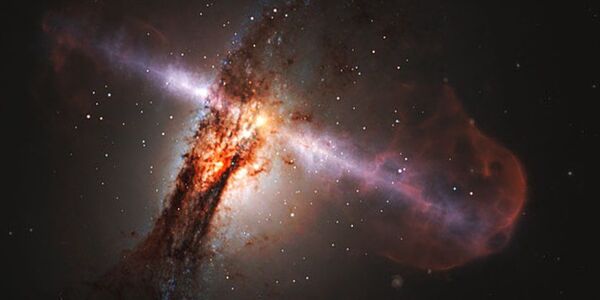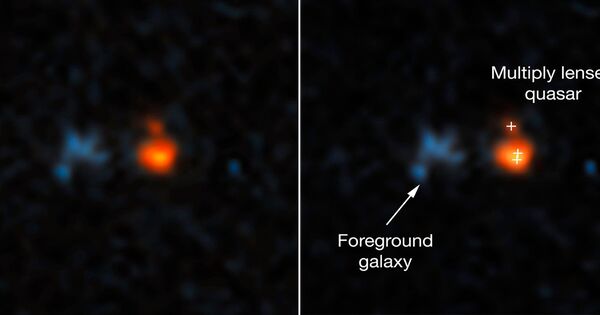Astronomers used the European Southern Observatory’s (ESO) Very Large Telescope (VLT) to characterize a powerful quasar, discovering that it was not only the brightest of its type but also the most luminous object ever observed. Quasars are the brilliant nuclei of distant galaxies, fueled by supermassive black holes. The black hole in this record-breaking quasar is growing in mass at the rate of one Sun every day, making it the fastest-growing black hole to date.
The black holes that power quasars gather materials from their surroundings in an extremely intense process that produces massive amounts of light. So much so that quasars are among the brightest objects in our sky, making even distant ones visible from Earth. In general, the most brilliant quasars are associated with supermassive black holes that are rapidly developing.
“We discovered the fastest-growing black hole known to date. It has a mass of 17 billion Suns and consumes slightly over one Sun per day. “This makes it the most luminous object in the known Universe,” says Christian Wolf, an astronomer at Australian National University (ANU) and lead author of the study published in Nature Astronomy. The quasar, called J0529-4351, is so far away from Earth that its light took over 12 billion years to reach us.
We discovered the fastest-growing black hole known to date. It has a mass of 17 billion Suns and consumes slightly over one Sun per day. This makes it the most luminous object in the known Universe.
Christian Wolf
The stuff being drawn in toward this black hole, in the form of a disk, emits so much energy that J0529-4351 is over 500 trillion times brighter than the Sun. “All this light comes from a hot accretion disc that measures seven light-years in diameter — this must be the largest accretion disc in the Universe,” says Samuel Lai, an ANU PhD student and coauthor. Seven light-years is approximately 15,000 times the distance from the Sun to the orbit of Neptune.
And, remarkably, this record-breaking quasar was hiding in plain sight. “It is a surprise that it has remained unknown until today, when we already know about a million less impressive quasars. It has literally been staring us in the face until now,” says co-author Christopher Onken, an astronomer at ANU. He added that this object showed up in images from the ESO Schmidt Southern Sky Survey dating back to 1980, but it was not recognized as a quasar until decades later.
Finding quasars requires precise observational data from large areas of the sky. The resulting datasets are so large, that researchers often use machine-learning models to analyse them and tell quasars apart from other celestial objects. However, these models are trained on existing data, which limits the potential candidates to objects similar to those already known. If a new quasar is more luminous than any other previously observed, the programme might reject it and classify it instead as a star not too distant from Earth.

An automatic examination of data from the European Space Agency’s Gaia spacecraft rejected J0529-4351 as a quasar because it was too bright, implying that it was actually a star. The researchers discovered it as a distant quasar last year using images from the ANU 2.3-metre telescope at the Siding Spring Observatory in Australia. However, discovering that it was the most bright quasar ever recorded necessitated the use of a larger telescope and more exact measurements. The critical data came from the X-shooter spectrograph on ESO’s VLT in Chile’s Atacama Desert.
The fastest-growing black hole ever recorded will also be an ideal target for the GRAVITY+ upgrade to ESO’s VLT Interferometer (VLTI), which is designed to precisely estimate the mass of black holes, especially those far from Earth. Furthermore, ESO’s Extremely Large Telescope (ELT), a 39-metre telescope under construction in Chile’s Atacama Desert, will make it easier to discover and characterise such elusive objects.
Finding and analyzing distant supermassive black holes could help solve some of the early Universe’s puzzles, such as how they and their host galaxies arose and evolved. Wolf’s pursuit for them is motivated by more than just one motivation. “Personally, I simply like the chase,” he said. “For a few minutes a day, I get to feel like a child again, playing treasure hunt, and now I bring everything to the table that I have learned since.”
















